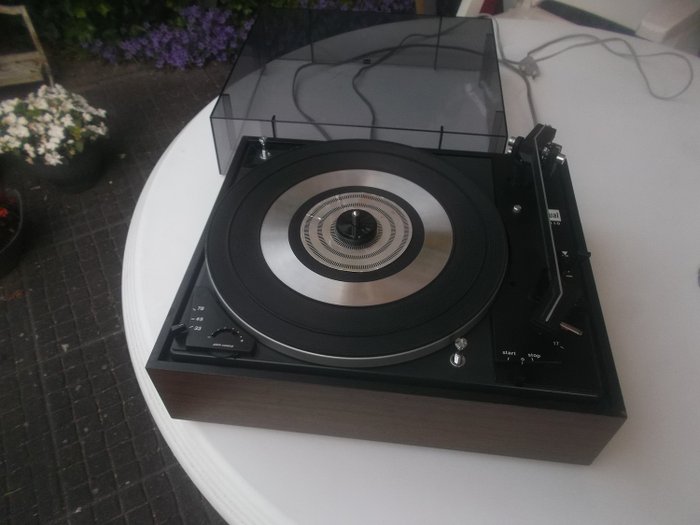

- #A RECORD ROTATES ON A TURNTABLE AT 33 RPM. HOW TO#
- #A RECORD ROTATES ON A TURNTABLE AT 33 RPM. FULL#
Some of them, like Justin Bieber or Dua Lipa, even have released new albums in this format. And many singers and bands are selling again their greatest hits on vinyl. (a) What is its angular speed in radians per second What is the linear speed of a point on the. Two final interesting facts: according to the British Phonographic Industry (BPI), 2021 was the year in which the most vinyl records were sold, since 1981. A vinyl record on a turntable rotates at 33 1/3 rev/min. In addition, they have output devices for converting our vinyl albums into other formats, such as CD or MP3. The new generation of vinyl players includes all kinds of controls to improve the sound quality. This speed was used in the first gramophones and it is useful for playing very old vinyl records. Additionally, there are turntables whose platter can also spin at 78 rpm.
#A RECORD ROTATES ON A TURNTABLE AT 33 RPM. HOW TO#
How to use a turntable properlyĪ curiosity is that the turntable has to rotate at different speeds, depending on the type of vinyl record: LPs (Long Play) turn at 33 rpm and Singles at 45 rpm. These LP records rotate exactly at 16 2/3 rpm, i.e. If you’re hitting the speed you want, that’s great.
#A RECORD ROTATES ON A TURNTABLE AT 33 RPM. FULL#
Start the platter and wait for it to reach full speed, let it spin for a short while, and take the stable reading as the rpm of your turntable. These signals pass through an amplifier and are reproduced with great fidelity by the speakers. Playing records of this type on a standard turntable fitted with a diamond. Answer (1 of 21): If you want to split hairs, a turntable is the platter of a device which, with a tonearm and phono cartridge properly mounted and adjusted, can play records at standard steady speeds with minimal mechanical rumble. Simply open the app, place the phone on the platter next to the spindle, and ensure the reader says 0. It is an electronic component capable of transforming the sonic vibrations into electric signals. The capsule is the real heart of this musical device. The contact between the small needle and the grooves produces minimum sonic vibrations, which vary according to the depth and width of the groove. These grooves contain the sound information. How is the sound produced?Īs the vinyl record rotates, the stylus slides over the tiny grooves of the vinyl record. And in the arm are the parts that allow the miracle of acoustic conversion: the capsule and the stylus. The platter is moved by an electric motor, rotating with the vinyl record placed on it. The basic components of a turntable are the platter, the arm, the stylus, the capsule, the amplifier and the speakers: Let’s see how this suggestive and almost magic phenomenon occurs. Let’s know the functional characteristics of turntables to understand how these devices work: Their main peculiarity is that they are capable of converting a mechanical vibratory signal, practically inaudible, into an acoustic signal of great volume and purity.


 0 kommentar(er)
0 kommentar(er)
